Best Sake for Cooking and Drinking Reviewed with Buying Guide
Sake (Nihonshu) is Japan’s favorite alcoholic beverage, but thankfully, it has made its way into the bars and kitchens of many non-Japanese.
It might sound surprising, but you can find great sake in Western shops and online!
There are two types of sake: one is for drinking, and one is for cooking.
Since it adds umami flavor and depth to dishes, sake is a wonderful cooking ingredient.
The drinking sake has a refined flavor, and it can be used for cooking too. However, cooking sake can not be used for casual drinking since it has a strong flavor and taste.
Sake is fermented from four basic ingredients: water, rice, a mold called koji, and yeast. Brewing just the right batch of sake takes skill, precision, and patience.
To help you find the best sake for cooking and drinking, we have reviewed some of the best bottles out there.
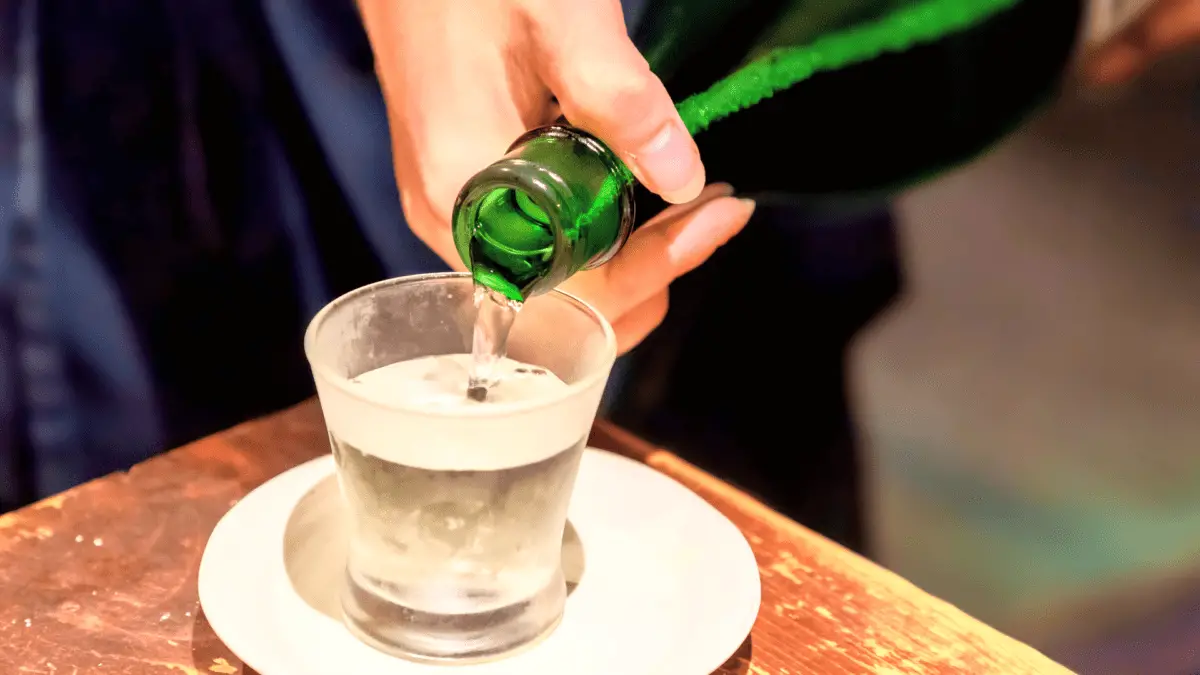
Kikkoman Ryorishi Cooking Sake is the ideal seasoning for your savory Japanese dishes. For drinking, I recommend Japanese Kikusui Junmai Ginjo, which is a dry, medium-bodied aromatic sake.
So you don’t even need to visit a Japanese market to get it, although we do recommend it to get the best sake you’ll ever taste.
| Best drinking and cooking sake | Images |
| Best overall drinking sake: Japanese Kikusui Junmai Ginjo | 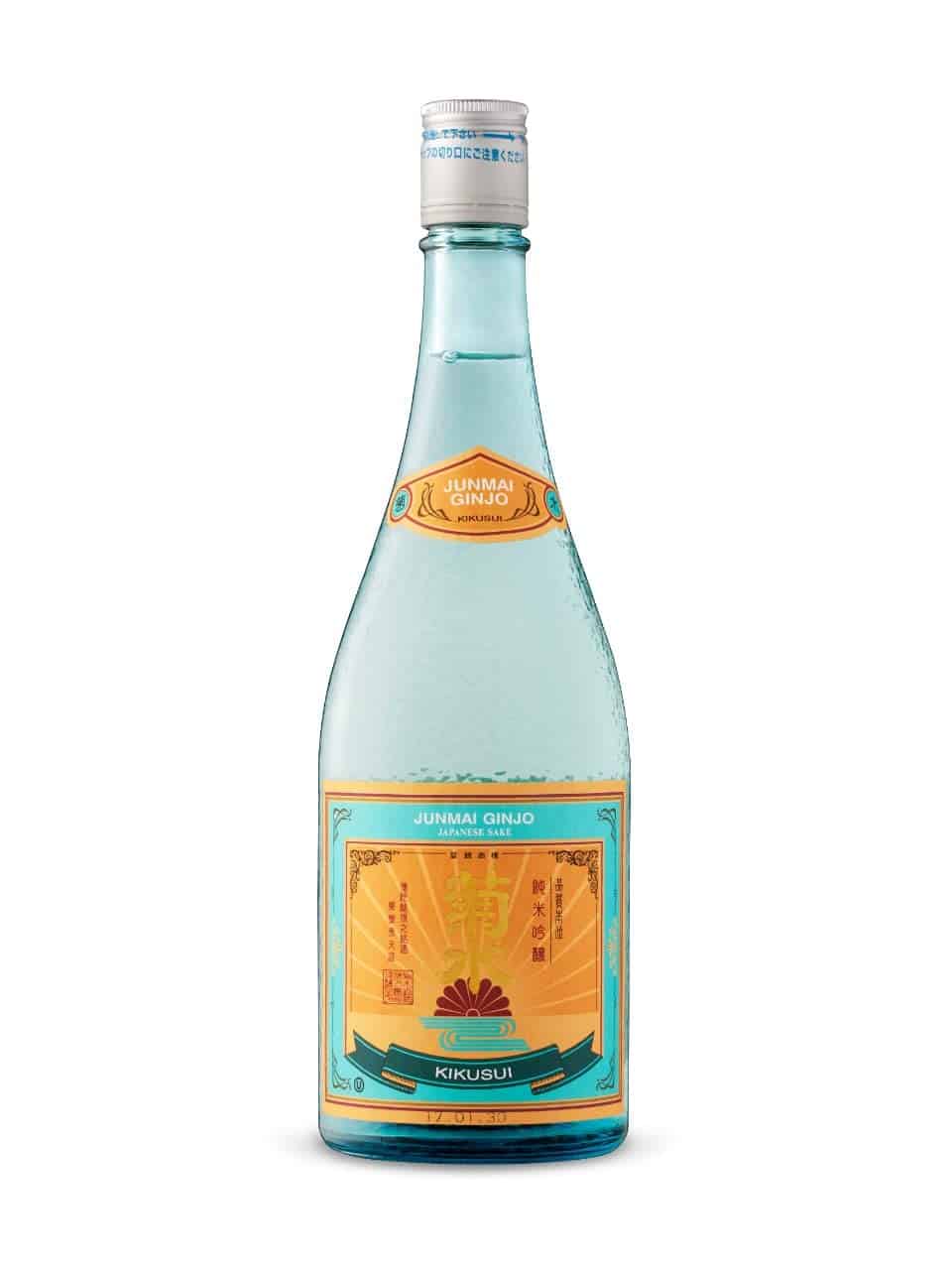 (view more images) |
| Best sweet and light sake for drinking: White Peach Yuzu Japanese Zake | 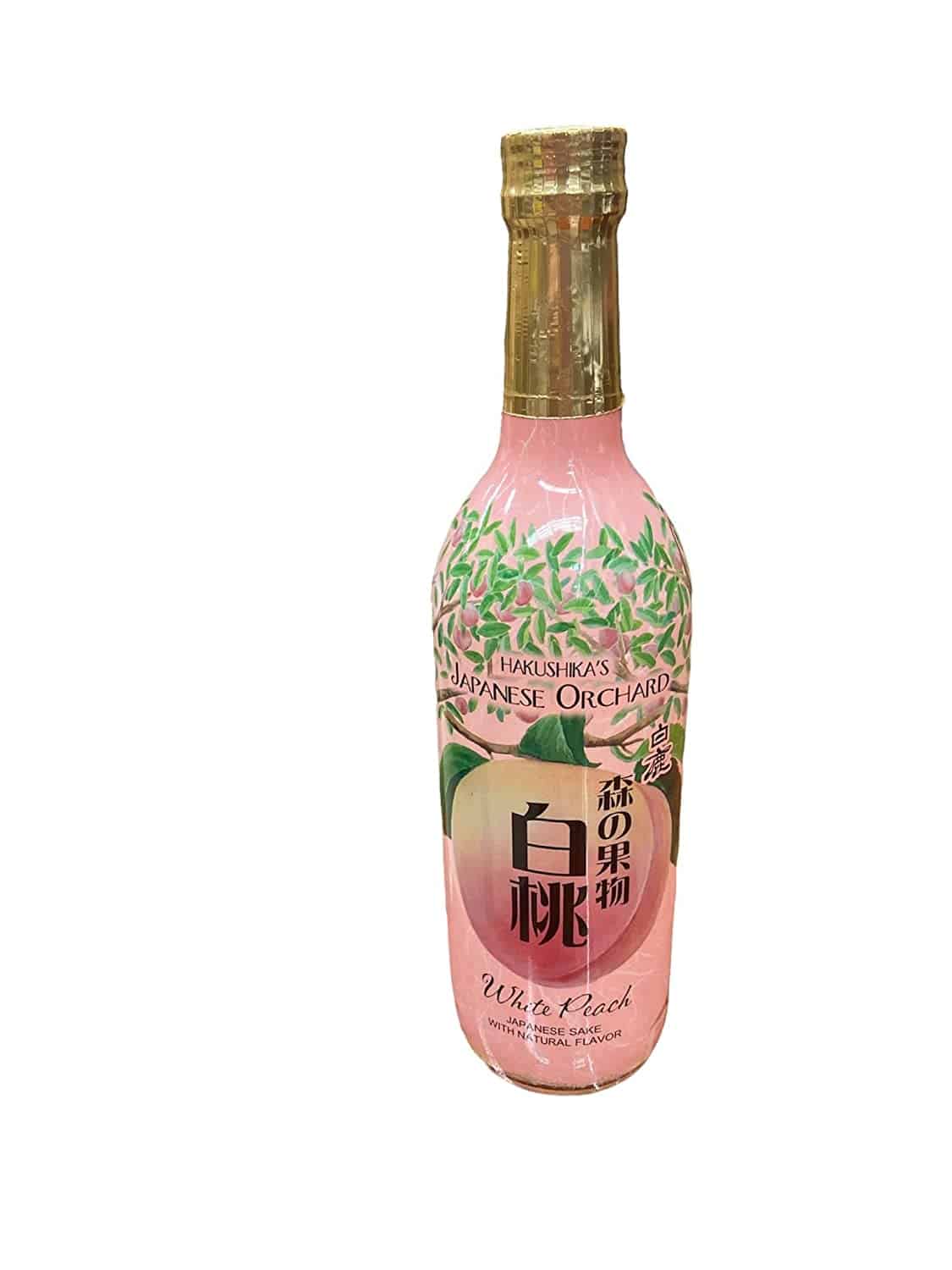 (view more images) |
| Best sparkling sake to drink (ozeki): Japanese Ozeki Hana Awaka Peach | 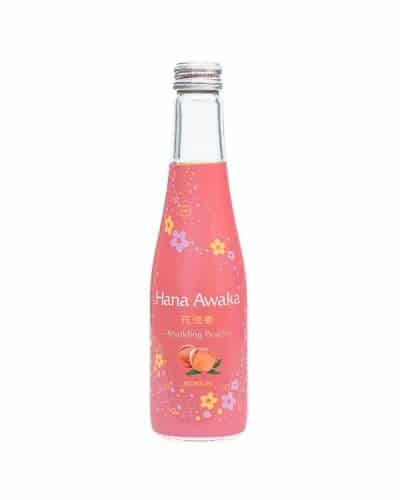 (view more images) |
| Best cloudy sake to drink (nigori): Nigori CloudySake Pineapple Flavor | 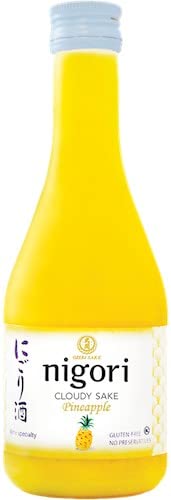 (view more images) |
| Best budget-friendly and multi-use sake: Gekkeikan Sake |  (view more images) |
| Best overall cooking sake: Kikkoman Ryorishi Cooking Sake |  (view more images) |
| Best organic cooking sake: Morita Premium Organic Cooking Sake | 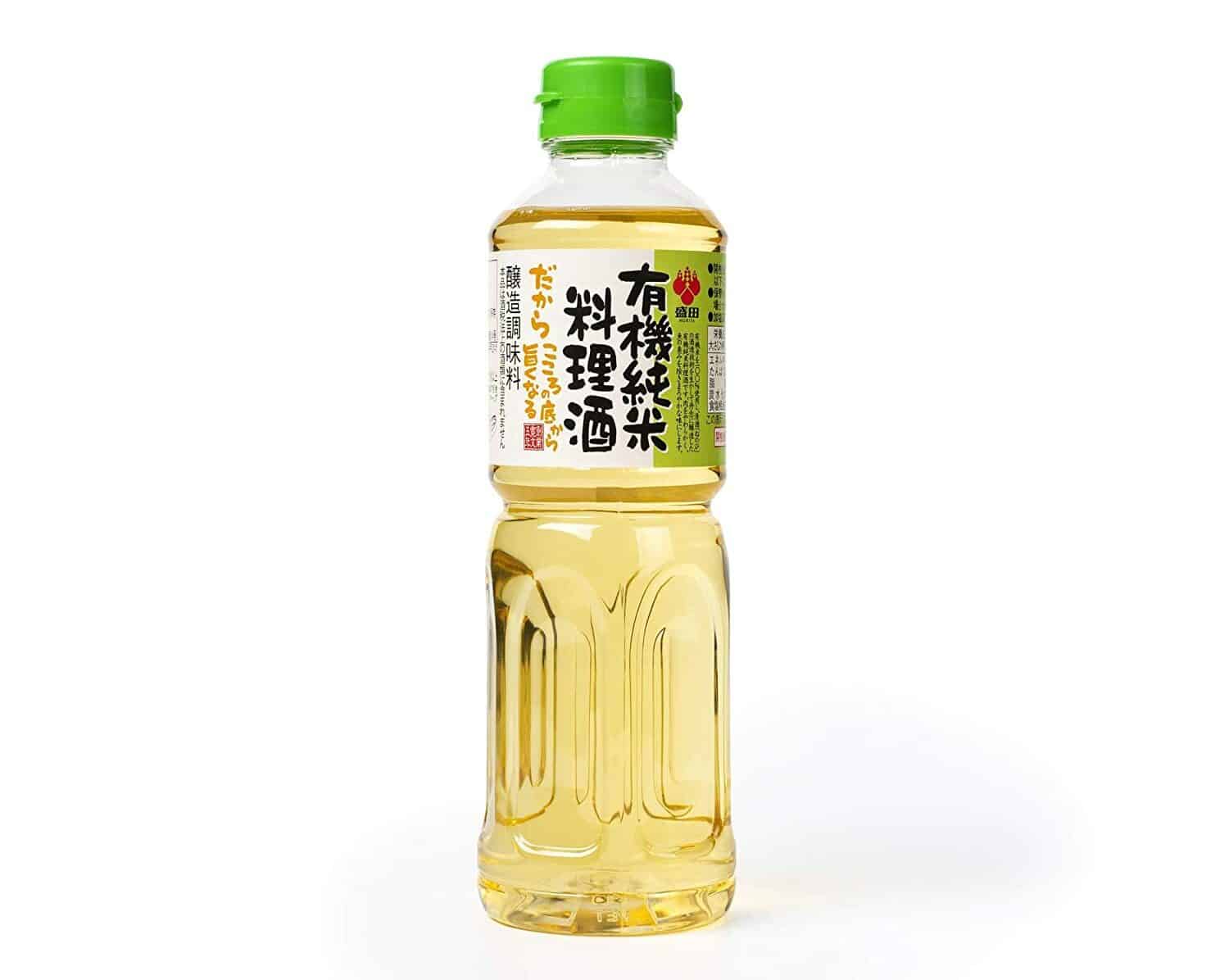 (view more images) |
| Best premium cooking sake: Hinode Ryori Shu Cooking Sake | 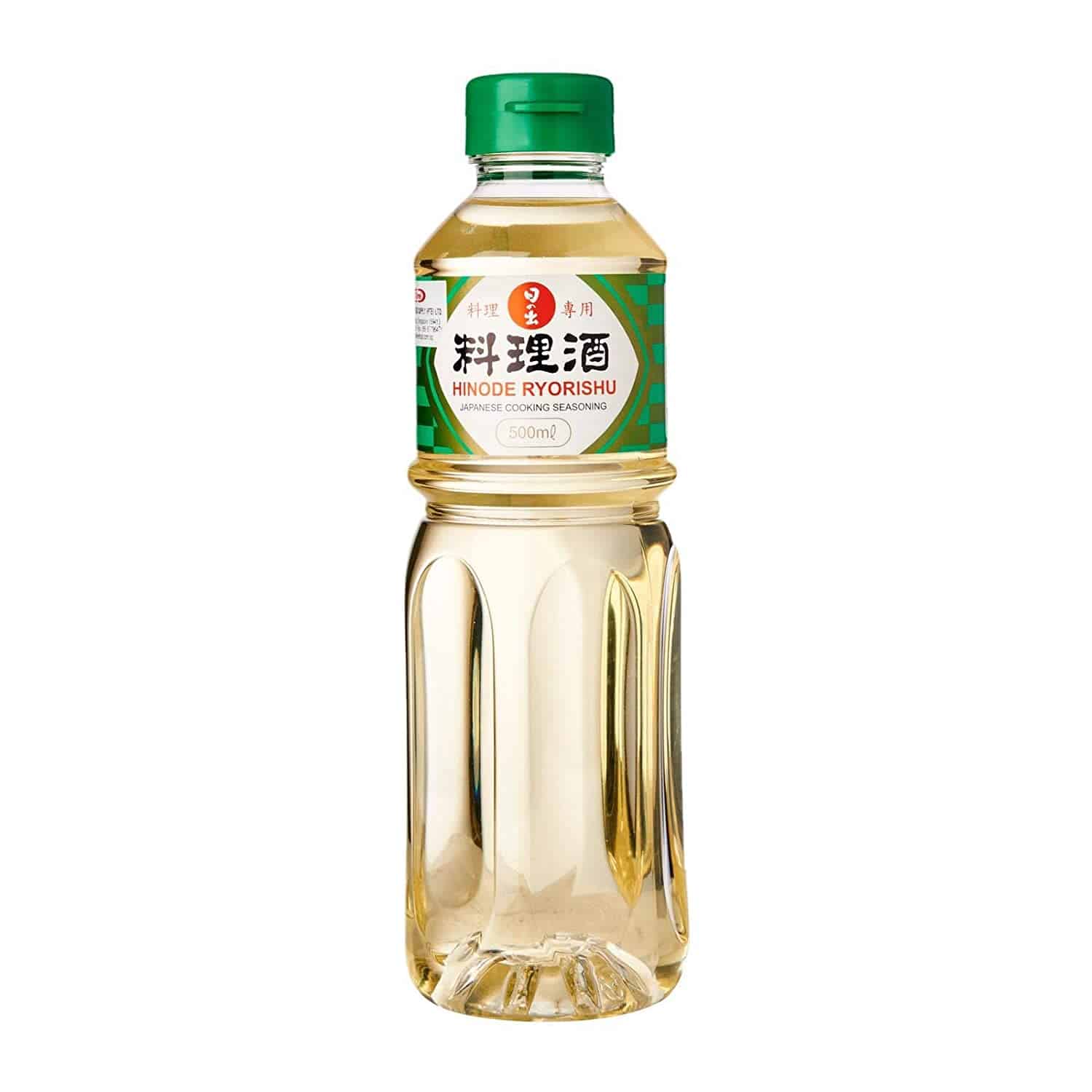 (view more images) |

Check out our new cookbook
Bitemybun's family recipes with complete meal planner and recipe guide.
Try it out for free with Kindle Unlimited:
Read for freeIn this post we'll cover:
- 1 Sake buying guide: how to choose the best cooking and drinking sake
- 2 Best drinking sake reviewed
- 2.1 Best overall drinking sake: Japanese Kikusui Junmai Ginjo
- 2.2 Best sweet and light sake for drinking: White Peach Yuzu Japanese Zake
- 2.3 Best sparkling sake to drink (ozeki): Japanese Ozeki Hana Awaka Peach
- 2.4 Best cloudy sake to drink (nigori): Nigori CloudySake Pineapple Flavor
- 2.5 Best budget-friendly and multi-use sake: Gekkeikan Sake
- 3 Best cooking sake reviewed
- 4 What’s a good sake for beginners?
- 5 Using sake in your meals
- 6 Final thoughts
Sake buying guide: how to choose the best cooking and drinking sake
When it comes to buying sake, there’s a lot of confusion, especially among non-Japanese people.
In fact, picking the best sake is no easy task.
The main problem people encounter is the language barrier – reading sake labels and understanding sake terminology is not something you learn overnight.
There are many types of sake, but hopefully, this guide will instruct you on how to search for and find good sake.
Let’s go over what you need to consider when purchasing sake.
Label
Ok, this is a bit of a tough one because sake bottles are known for being full of very hard-to-read kanji calligraphy (one of the 3 Japanese scripts/ideograms).
The general name for sake in Japanese is ‘nihonshu‘ and this term simply means ‘Japanese alcohol.’
There’s also a special name for sake which is seishu, meaning ‘clear alcohol.’ Don’t mistake it for shochu, which is a different drink and a Japanese hard liquor.
To read the label correctly, you’ll need to know the following:
- Cooking sake is usually labeled as ryorishi or ryorishu.
- Drinking sake is usually labeled according to the types of sake it is (yes, there are several types of drinkable sake).
- Junmai, Ginjo, Daiginjo, Junmai-shu, Ginjo-shu, Daiginjo-shu, Honjozo-shu, Namazake are just some of the varieties you’ll come across.
- There’s a special sparkling dry sake with various fruity flavors, and it’s called Ozeki sake.
First, look at the name of the sake, which is usually in Kanji lettering.
Some modern breweries are also adding names in romaji lettering, which means that the Japanese sounds are represented in roman characters.
Next, check out the name of the brewery. There are some famous breweries, such as Otokoyama, Suehiro, and Sawanoi.
Look for the make of the sake or the type i.e., light, dry, etc.
Bottling date: the sake should be no older than 1 year (unless it’s a specialty product).
What are you using it for? Cooking vs drinking
First, you need to think about whether you want to drink the sake or simply cook with it.
You don’t have to buy an expensive sake for cooking, though, just as you wouldn’t buy expensive wine just to cook with.
If you’re buying a drinking sake that you want serve to your friends and family, then quality is important because it highly influences the taste.
Cheaper sake tastes best when warmed up because it masks some of the impurities.
So if you want to drink it cold, then look for a higher price point because you’ll be able to taste the quality.
On the other hand, cooking sake is used as an ingredient, so it doesn’t need to be high quality.
However, some cooking sake can actually make dishes taste better, so you might consider splurging for that special recipe.
You might want the sake to have a strong umami flavor that can stand up to other ingredients in your dish. In this case, you’ll probably want to find a sake with more complexity and body.
What does the sake contain?
Rice is the main ingredient of sake, and trust me; there are so many types.
Once you narrow down your use for sake, it’s time to consider what types of rice are used to make each kind.
For instance, there are over 70 different types of rice used to produce it, with the three primary varieties, yamadanishiki, gyohakumangoku, and miyamanishiki, accounting for roughly three-quarters of the entire area utilized to grow rice, which is about 15,000 hectares.
In essence, rice and water are fermented to create sake. However, a small amount of distilled alcohol is added to some types of sake.
To boost the amount of inexpensive sake produced, a significant amount of distilled alcohol may be added.
Rice polishing ratio & grade
The rice polishing ratio, also called the milling rate, is another thing that can affect the flavor of sake. The more polished the rice, the higher the polishing ratio, and vice versa.
The degree of rice polishing determines the sake’s grade. Unwanted lipids are removed during polishing, leaving only the grain’s starch core.
30% of the rice is typically polished away at standard polishing ratios.
However, the sake that is produced from rice in which at least 40% of the outer layer has been removed is known as “Ginjo.”
Ginjo sake made with premium ingredients, is far more sophisticated, delicate, and well-balanced than non-premium sake.
Cooking sake has lower polishing ratios, but this doesn’t mean it’s automatically low quality.
Some cooking sake is made with premium ingredients, which accounts for its more complex flavor.
If you’re just looking to buy a basic sake to cook with, then go for a lower polishing ratio.
Flavors
Cooking sake basically has an umami-like flavor that won’t overwhelm the other ingredients you’re using, while drinking sake can have a variety of flavors depending on how it is made.
What flavor do you like? Dry, sweet, or fruity?
Next, think about the taste and aroma. There are three main types of sake: dry, medium-dry (or “junmai”), and sweet (or “toji”).
There are all types of flavored sakes as well, which can include anything from apple to sweet potato.
If you’re not sure what type of flavor you want, then start with something mild or try a few different varieties until you find one that suits your taste.
In general, premium sakes tend to have richer flavors, so if you want something more complex and bold, then you might need to spend a bit more.
Alcohol content
Sake typically has an alcohol by volume of 15–16%, though there are always exceptions to any norm. As you’ll see, many of the light fruity sakes have about 7 to 15% ABV.
Cooking sake has an average ABV of 13-14%, whereas drinking sake can have between an ABV of 15-22%.
Best drinking sake reviewed
Here’s a list of some of the top sakes to try. You’ll find both drinking and cooking sakes here.
Best overall drinking sake: Japanese Kikusui Junmai Ginjo
If you’re looking for an alternative to white wine for your next meal, then look no further than Japanese Kikusui Junmai Ginjo.
With a light flavor and crisp taste, this sake pairs perfectly with seafood, vegetables, or even just on its own.

- dry, medium-bodied
- Junmai Ginjo
- ABV: 15%
- Milling rate: 55%
- Notes: cantaloupe, banana, mandarin orange
This Junmai Ginjo is very well-balanced in terms of flavor, so you won’t feel overwhelmed by any one ingredient.
It features cantaloupe, banana, and mandarin orange notes, giving it a pleasant fruity taste.
This sake isn’t too strong or too rice flavored since it’s medium-bodied, so it’s appealing to most people, even those who are unfamiliar with this classic Japanese drink.
It’s the best option for casual drinking because of its easy-going character and smooth texture.
So, if you’re looking for a versatile sake that can be enjoyed at any time of day, with any meal, then you’ll love Kikusui Junmai Ginjo.
This drink pairs well with stir-fries, noodles, rice dishes, and of course, grilled meats and stews.
Best sweet and light sake for drinking: White Peach Yuzu Japanese Zake
White peach is one of Japan’s most popular fruits and flavorings for food, drinks, and candies.
Therefore, it’s not surprising that one of the country’s top sakes is peach flavored.

- sweet
- Junmai
- ABV: 10%
- Milling rate: 70%
- Notes: white peach, ambrosia
This is a lighter sake with a pleasant fruity white peach aroma. It’s nicely balanced, with a sweet and refreshing taste of ambrosia.
This sake is perfect for anyone who enjoys fruity flavors and a lower alcohol content.
The experts recommend serving this sake chilled or on the rocks so you can fully experience the subtle peach and citrus flavors.
And, if you’re planning a summer cocktail party or Japanese barbecue, this sake is an excellent choice for quenching your guests’ thirst.
Hakushika White Peach pairs well with foods like grilled meat (Japanese BBQ), fruit salad, green vegetables, ham, pork, sausage, cheese, and even sweet desserts like cakes.
Best sparkling sake to drink (ozeki): Japanese Ozeki Hana Awaka Peach
Ozeki sake is widely known for its high quality, and the Sparkling Hana Awaka Peach is no exception.
With a delicate peach flavor and soft carbonation, it is the perfect sake to enjoy on a warm summer day.

- sparkling, sweet
- full-bodied
- Ozeki
- ABV: 7%
- Milling rate: 70%
- Notes: peach
This sparkling sake is served as an aperitif because it’s very light and refreshing, with a subtle hint of sweet white peach.
It’s also quite full-bodied, giving it a more complex flavor than other sake varieties.
This drink is best enjoyed chilled alongside light meals like salads and sandwiches. It’s also great on its own as a casual drink with friends or family.
So, if you’re looking for something different to try and want to explore the vast world of sake, then be sure to give Sparkling Hana Awaka Peach a try.
Best cloudy sake to drink (nigori): Nigori CloudySake Pineapple Flavor
Nigori refers to a type of sake that is pressed before it has been completely fermented, so the drink is left with a cloudier appearance and more subtle flavors.
This hazy or cloudy sake expertly mixes the light, refreshing pineapple flavor with the tropical sweetness and creamy texture of Ozeki Nigori Sake.

- sweet and sour
- Nigori
- ABV: 9%
- Milling rate: 70%
- Notes: peach
It is lightly sweet with a sour taste which comes from the addition of Costa Rican pineapple.
Perhaps this isn’t a traditional Japanese nigori, but it’s a great American fruity sake to complement a good meal.
Whether you’re pairing it with seafood, chicken or just enjoying it on its own as a refreshing beverage, this nigori is bold, rich, and full of sweet and sour flavors.
This particular sake is best served with a sweet dessert or a fruit salad.
Best budget-friendly and multi-use sake: Gekkeikan Sake
I previously mentioned that you could use drinking sake for cooking.
But there’s some great news: there’s an affordable sake called Gekkeikan Sake which you can drink and use for cooking!

- drinking & cooking sake
- mild flavor
- ABV: 15%
- Milling rate: 70%
- Notes: fresh cut grass, fennel
It’s my top pick for both drinking and sake and can save you some money since you don’t have to buy a separate cooking sake.
This sake is very affordable and tastes best when warmed up. It has a rich and deep flavor, making it perfect for both drinking and cooking.
It has notes of freshly cut grass and fennel which is a nice alternative to the fruity options I’ve mentioned above.
I prefer to use it when cooking because the flavor isn’t quite as intense as some of the other cooking sakes, so it allows the flavors of my ingredients to come through.
Also, if you drink it at room temperature, it’s not quite as delicious as one of the premium drinkable sakes.
Whether you’re looking for an affordable sake to sip on or a cooking ingredient that will take your dishes to the next level, Gekkeikan Sake is a perfect choice.
Plus, the Gekkeikan brand is very reputable in Japan since it’s one of the world’s oldest family-owned brewing companies.
Best cooking sake reviewed
Best overall cooking sake: Kikkoman Ryorishi Cooking Sake
The Kikkoman Ryorishi is one of the classic cooking sakes from Japan. It has a rich, bold, umami flavor, so a little goes a long way!

- ABV: 13%
An old Japanese company, Kikkoman, has been famous for its distinct products of Japanese condiments and cooking ingredients such as soy sauce and tempura batter.
Undoubtedly, they also provide high-quality Ryorishi. The brand is popular worldwide, so it must be easy to find in the US.
Kikkoman Cooking Sake has an alcohol content of 13%.
It’s commonly used in dishes like ramen, udon, and stir-fried noodles. In fact, it’s my secret ramen ingredient if you’re looking for an authentic umami taste.
This sake can be used as a marinade or to infuse flavor into cooked rice, so it’s perfect for any home cook who is looking for some extra flavor in their meals.
People are using this sake to flavor their stir-fry, meats, and bland green veggies!
Home cooks really enjoy using the Kikkoman cooking sake because it’s not overpowering and evaporates quickly while it’s cooking, so the final dish isn’t overly salty or starchy.
Per 100 grams, this Ryorishi contains 2.7 grams of salt and 17 grams of carbohydrates, with about 2.5 grams of it coming from sugar.
The total energy for this portion is 446kJ/106kcal.
So if you’re looking for the best cooking sake that will elevate your cooking game, then be sure to check out the Kikkoman Ryorishi Cooking Sake.
It’s the best budget-friendly cooking sake on the market and is widely available.
Best organic cooking sake: Morita Premium Organic Cooking Sake
The Morita Premium sake has an amazing pure flavor, so it’s the best option if you’re looking to make tasty dipping sauces.
It is also excellent for marinades and brines as well because it doesn’t leave any off-tastes, flavors, or odors in the final food.
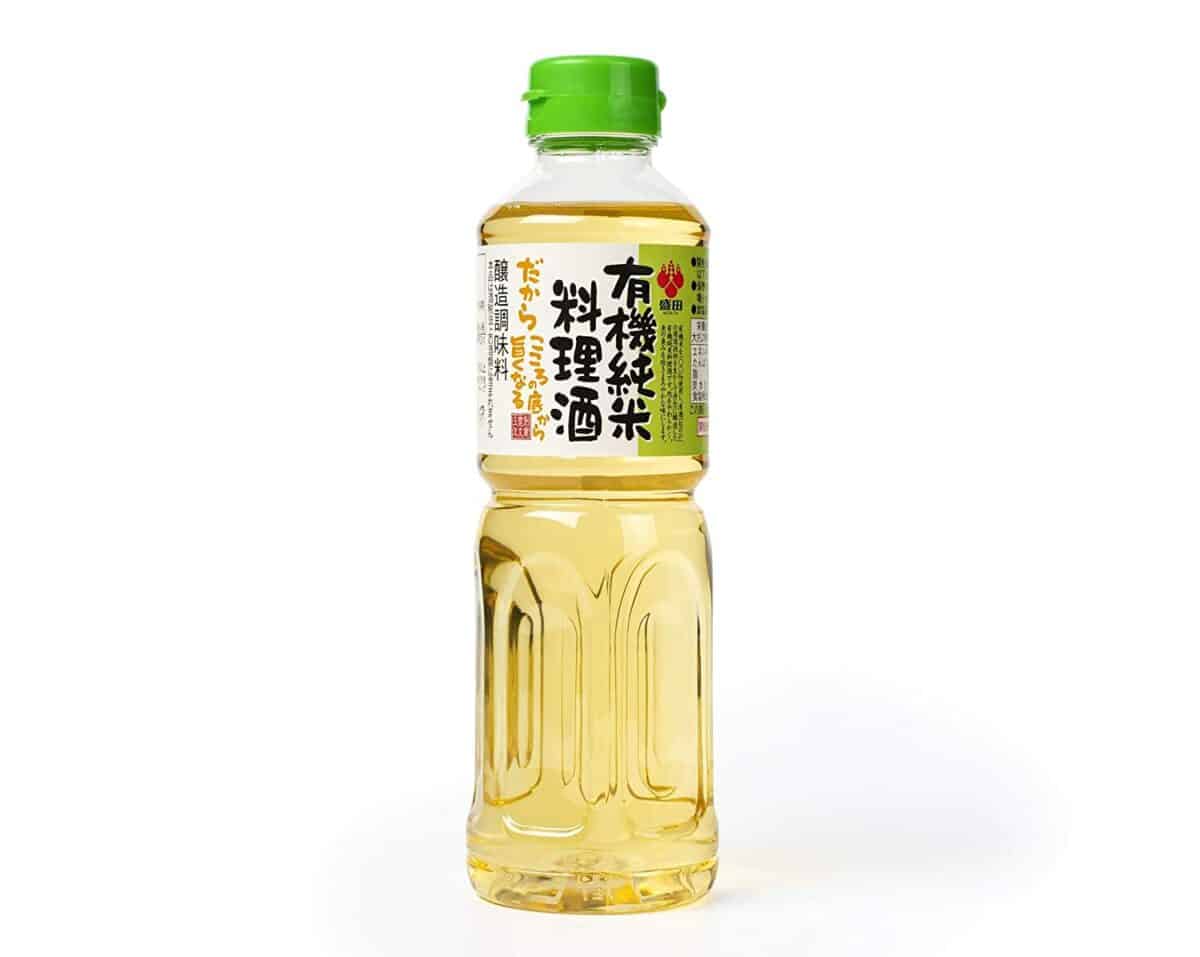
- ABV: 13%
This premium cooking sake is meticulously crafted using the same brewing procedures as NENOHI refined sake.
It is prepared entirely from organic rice. It is ideal for boosting the unique flavor of food items because it combines the umami and rich flavor of rice with a full-bodied scent and aroma.
Like the Kikkoman, it has an ABV of 13%, so you only need a little to get the perfect flavor in your dishes.
Whether you’re marinating chicken, sautéing vegetables, or making sushi rice, the Morita Premium Organic Cooking Sake will help you create an amazing meal while letting the ingredients shine through.
This cooking sake is also free from preservatives, so it’s perfect for those who are following a gluten-free, vegan, or vegetarian diet.
Hinode is one of the most loved brands of cooking sake in Japan, so you might want to consider trying out this one as well.
It’s touted as a premium cooking sake, and that’s why it’s a bit more expensive than something like Kikkoman.
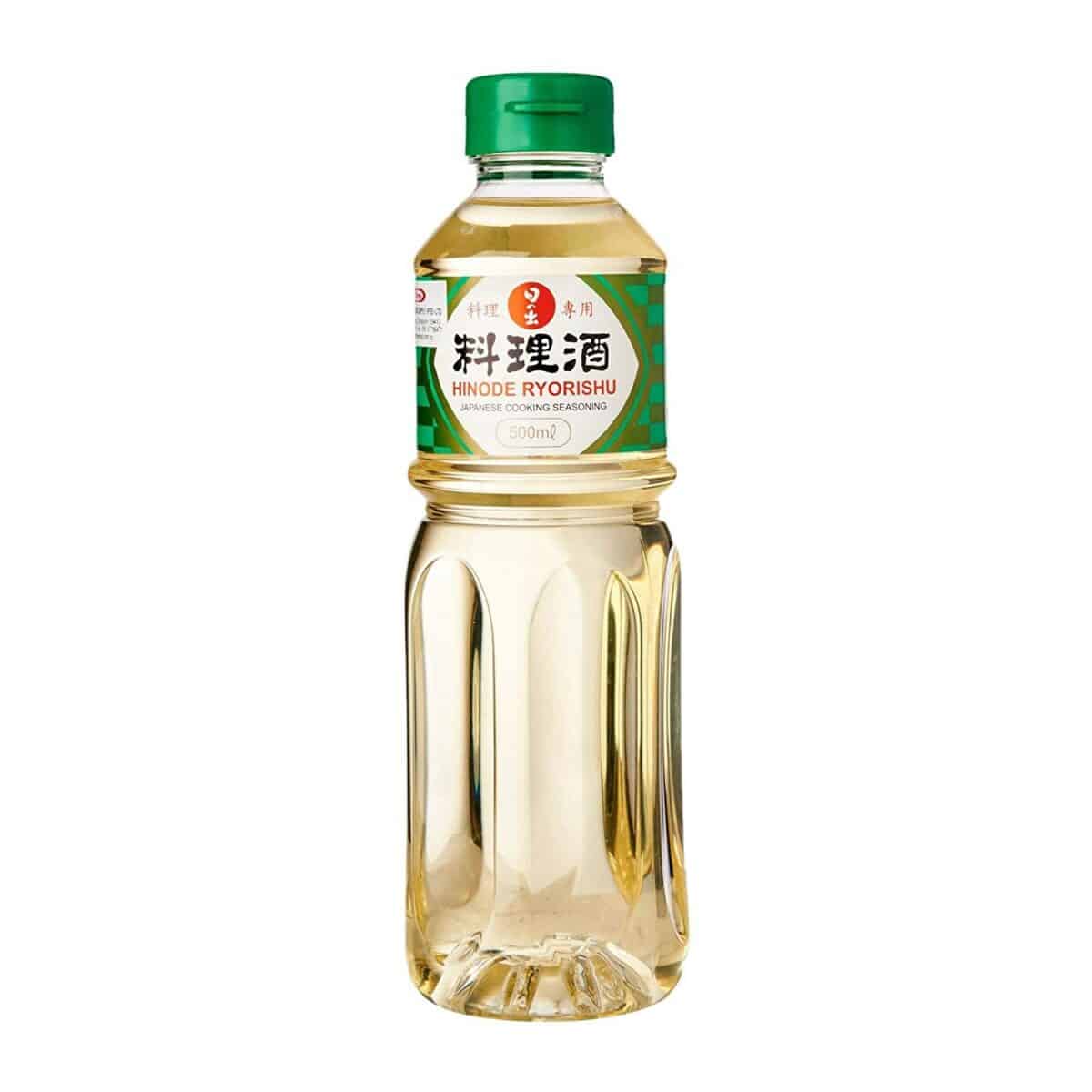
- ABV: 13%
This Japanese company is an expert in delivering many kinds of high-quality Mirin and Sake, including cooking sake.
Hinode Ryorishu has an ABV of 13-14%, which is similar to other cooking sake brands. Per a portion of 100 ml, this liquid contains 347kj/83kcal of energy.
There are also 2.1 grams of salt and 1.5 grams of carbohydrates without any sugar content.
One of the best things about this cooking sake is that it has an intense aroma and flavor, so you only need to use a small amount to get a powerful umami taste.
Perfect for those who love to cook with fresh ingredients, this cooking sake will elevate your dishes and infuse them with a slightly fishy and teriyaki taste!
The flavor is a bit different from other cooking sakes.
What’s a good sake for beginners?
You might be accustomed to Western types of alcohol but are new to sake.
If that’s the case, then a great place to start is with Hakutsuru Sake. It’s Japan’s bestselling sake, and most Japanese people are familiar with the taste.
This affordable and versatile sake has a mild flavor that makes it easy to drink, even for beginners. Plus, its low alcohol content means you can easily try different varieties without getting too drunk.
For those looking for something sweet, I recommend sweet Gokujo Amakuchi sake because it has similar characteristics and acidity to regular white wine.
I also recommend futsushu, especially warm sake. These will help you get accustomed to the taste of rice beverages. You can then try the dryer sakes like ginjo.
If you aren’t a big fan of the rice flavored drinks, try fruity varieties.
For those who want to taste original sake, nigori, and namazakes, with about 15% ABV, are great options.
They are a cloudy sake with a milky appearance and closely resemble how sake used to be way back in the day.
Dry sake like Karakuchi has the harshest rice flavor.
Using sake in your meals
There are two ways to pair sake with food. One, as mentioned above, you can serve sake as a condiment beverage for a meal.
Somehow, many kinds of dishes will taste even better if you eat them alongside drinking sake. The tastes complement each other.
Almost any type of sake can pair well with any kind of food. But some pairs are much more enjoyable and popular.
For example, sushi and sashimi will go perfectly with Junmai Daiginjo sake. Fatty meals like yakitori can be paired with dry Junmai Ginjo.
Not only Japanese food. You can also drink sake to complement dishes from other countries.
- For example, pizza would go well with Honjozo or even Futsushu sake.
- Beefsteak and any other fatty meals, like yakitori, can pair perfectly with Junmao Ginjo.
Honeydew, cantaloupes, peach, tropical fruits, minerals, dirt, green apples, coconut, and anise are popular sake aromas.
If your meal is enriched by these aromas (think tropical fruit salsa on grilled chicken), then the sake and food will fit together well.
You’ll taste flavors similar to some of the aromas you’ve encountered, but not necessarily all.
The simple tastes your tongue is able to identify are sour, sweet, bitter, and salty.
Needless to say, sake has no salt and should not be bitter. But the palette often notices tropical spices, minerals, coconut, earthiness, and, of course, rich, creamy sake rice.
Sakes infused with fruit should have aromas and flavors which are true to their particular infusion. Ideally, the taste will linger.
What recipes can I make with sake?
If you got your hands on some authentic sake and are looking to try it out, here are some great recipes to try:
- Teriyaki sauce
- Salted chicken wings
- Sukiyaki broth
- Chawanmushi
- Ramen eggs
- Teriyaki salmon
Can you get drunk from eating food cooked with sake?
Sake is a cooking wine and contains alcohol.
However, if it is cooked in a dish, the alcohol evaporates and leaves just the flavor. You can’t get drunk from eating food cooked with sake or mirin.
You can get drunk from drinking sake. Drinkable sake has alcohol contents high enough to get you drunk.
Make sure you add sake to your dish early on so that the alcohol evaporates.
What does good sake taste like?
Good sake has a complex, rich flavor that is slightly sweet with fruity and creamy notes. It should also be smooth and easy to drink, with a light, clean finish.
The best sake will vary depending on your personal preferences and the dishes you are enjoying with it.
Some people prefer a drier or fruitier style, while others prefer the subtler flavors of low-alcohol sake.
Whatever your preference, there is sure to be a good sake out there for you. Just keep trying different ones until you find your favorite!
What is the best sake for cocktails?
There is no definitive answer to this question, as different people have different preferences when it comes to sake cocktails.
But generally, daiginjo or ginjo sake are great options to use in cocktails, as their delicate flavors won’t overwhelm the other ingredients.
Sake tends to pair well with fruity flavors, so you might also consider using fruit-infused sake in your cocktail.
And finally, adding a dash of cold or hot water can create a wonderful silkiness in the sake that makes it great for cocktails.
Final thoughts
Sake is a staple ingredient in Japanese culture.
If you are looking to cook authentic Japanese dishes, you need to get your hands on the best cooking sake, like the Kikkoman Ryorishi.
But if you want to drink the sake, I recommend the Japanese Kikusui Junmai Ginjo, which is bold, fruity, and pairs well with meaty dishes.
The best way to try sake is to experiment with different types and find what you like best! Cheers!
Can’t find or don’t want to use sake? Here are the 10 best sake substitutes that I can recommend
Check out our new cookbook
Bitemybun's family recipes with complete meal planner and recipe guide.
Try it out for free with Kindle Unlimited:
Read for freeJoost Nusselder, the founder of Bite My Bun is a content marketer, dad and loves trying out new food with Japanese food at the heart of his passion, and together with his team he's been creating in-depth blog articles since 2016 to help loyal readers with recipes and cooking tips.

